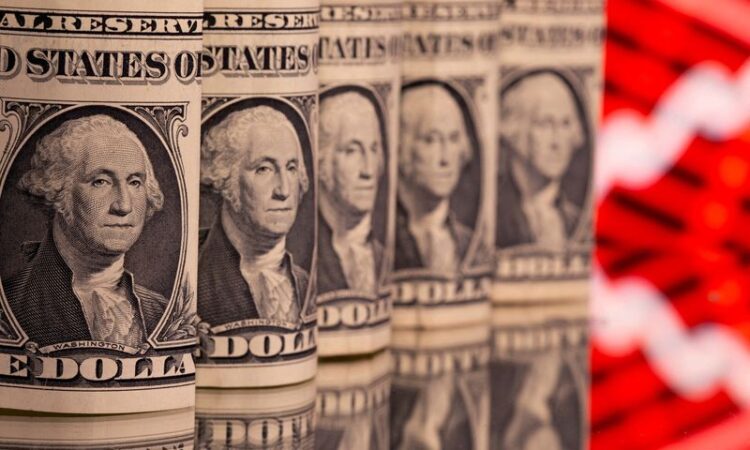
By Saqib Iqbal Ahmed
NEW YORK (Reuters) – A host of U.S. companies are faced with a problem they had not expected to confront this year: a rising dollar.
Many market participants believed the dollar would fall on the back of interest rate cuts that both investors and the Federal Reserve had penciled in for 2024. Those cuts are yet to come, and the U.S. dollar index, which measures the greenback’s strength against a basket of currencies, is up 4% in 2024 and has climbed about 16% in the last three years.
While those gains reflect the relative strength of the U.S. economy, a rising dollar can be a problem for some companies. A strong U.S. currency makes it more expensive for multinational companies to convert foreign profits into dollars, while also hurting the competitiveness of exporters’ products. Companies guarding against dollar strength must also devote resources to hedging strategies that offset the effects of the rising currency on their bottom lines.
All told, every 10% year over year rise in the dollar shaves some 3% from S&P 500 earnings, according to estimates from BofA Global Research.
The dollar’s strength in the latest quarter comes during a period of robust corporate profits. With well over 80% of the S&P 500 having reported first quarter results, companies are on track to have increased earnings by 7.8%, up from an expectation of 5.1% growth in April, according to LSEG IBES. Nonetheless, companies from Apple Inc and IBM to Procter & Gamble have mentioned foreign exchange as a headwind.
The strong dollar “has caused a lot of consternation,” said Andrew Gage, senior vice president at treasury and finance solutions firm Kyriba. “CFOs are asking their treasury teams to be much more diligent in managing the risk that comes from that strong dollar.”
The dollar’s gains are being fueled by U.S. economic strength, which is eroding expectations for how deeply the Fed will be able to cut rates this year. Investors are pricing in around 50 basis points of rate cuts for 2024, compared to more than 150 basis points forecast at the beginning of the year, futures markets show.
Yields in the U.S. stand above those in many other economies as a result, bolstering the dollar’s appeal over other currencies.
“Nearly all FX practitioners were expecting the dollar to be weaker this year with the anticipation of lower U.S. interest rates,” said Amo Sahota, director at foreign exchange risk management firm Klarity FX in San Francisco. “Corporates were licking their lips, essentially waiting for that to play through.” Not all S&P 500 companies are equally affected by the dollar’s swings. The information technology, materials and communication services sectors top the list with the most international revenue exposure, garnering as much as 57%, 52% and 48% of their total revenue respectively from abroad, data from FactSet showed. In the latest quarter, Coca-Cola reported a 9% currency headwind, noting it was driven by currency devaluation in markets experiencing intense inflation. Conglomerate 3M said foreign currency negatively impacted adjusted margins by a larger-than-expected 0.6 percentage points, while Apple called out nearly four percentage points of negative impact from foreign exchange on its quarterly revenue.
To prevent exchange rate moves creating big swings in earnings, businesses use various hedging strategies including those that employ forward and options contracts.
Some firms that advise companies on managing FX risk noted a rise in hedging activity in recent weeks, though quieter currency markets have made hedging a less urgent issue for some companies even as the dollar has risen. In March, Deutsche Bank’s index of currency volatility fell to its lowest level since September 2021.
“Towards the end of the first quarter, we did see some complacency on the hedging front. Currency volatility fell to a multi-year low, which led to a lack of a sense of urgency,” said John Doyle, head of trading and dealing at Monex USA in Washington. “However, we have seen a recent uptick in hedging over the past month and a half.”
Karl Schamotta, chief market strategist at payments company Corpay, said the subdued level of currency volatility may be making some companies “almost too complacent about the risks they are facing.”
Analysts at BofA Global Research said that while they believe the dollar will eventually weaken over the medium term, “the turning point has become harder to time.”
“The case to hedge USD upside risks for the rest of the year has materially grown for U.S. corporates,” they said.
(Reporting by Saqib Iqbal Ahmed; Editing by Ira Iosebashvili and Daniel Wallis)



